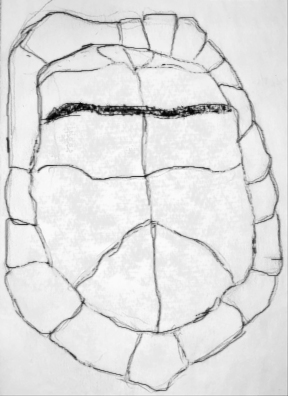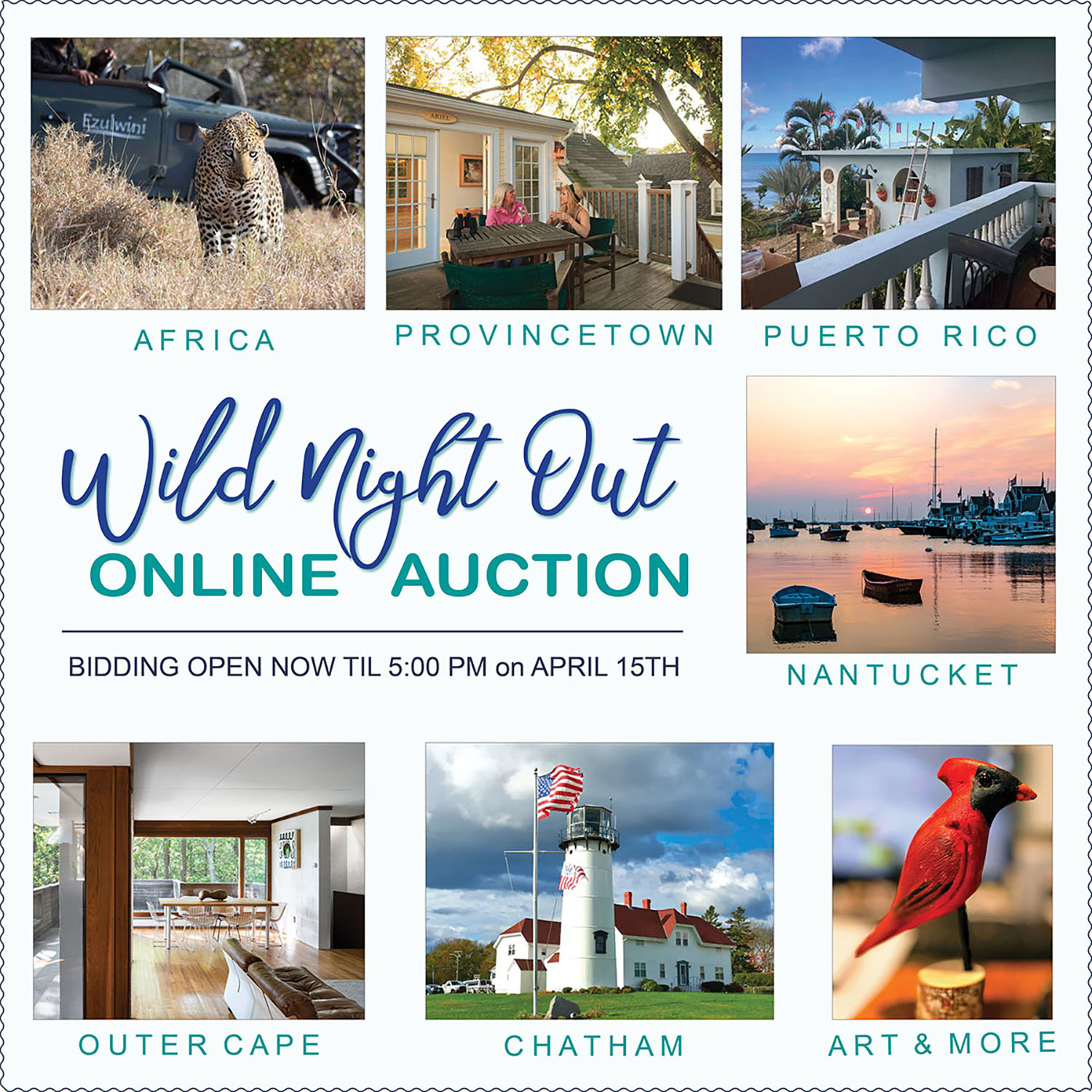
Eastern Box Turtles
Adventures of a Volunteer By Amy Sanders
Some months as a volunteer are more exciting than others. Alas this month I couldn’t take the only two calls I got for field rescues, and while I’ve done quite a lot of other things for Wild Care, none are really story-worthy. So I thought I’d shift a bit this month and write about Eastern Box Turtles, a subject I do talks on from time to time.
Cape Cod is home* to several types of turtles. Diamondback Terrapins inhabit our marsh areas, and Eastern Painted and Common Snapping Turtles inhabit our pond areas. Eastern Box Turtles are a land turtle, and inhabit our woodlands and meadows often near ponds (but not in!). They can be found throughout the eastern half of the United States. Massachusetts, along with several other states list Eastern Box Turtles as Species of Special Concern (while they are considered endangered in Maine). Threats to their population include vehicle strikes, loss of habitat, ATV’s (which disturb wintering turtles and eggs), illegal collection, mowing of fields and early successional habitat during the breeding season, and disturbance by domestic pets.

An Eastern Box Turtle is a colorful (typically shades of orange, yellow and black) turtle that gets its name from its hinged plastron (bottom shell).
This hinge allows the turtle to fully retreat inside and close its shell, where it is virtually impossible for a predator to reach. The colors and patterns on the carapace (upper shell) vary considerably between turtles with some being quite bright and others being more subdued. This turtle has a relatively high domed carapace that is an adaptation of its rib bones and sternum, and is covered with a layer of keratin (like your fingernails). Individual sections of the shell are called scutes and they grow rings as the turtle grows. These rings can help identify the age of the turtle to some degree. They wear with time so are difficult to count as the turtle ages.
These turtles grow to about 6” and can weigh up to 1 or 2 pounds. They tend to reach their full size around the age of 20. They are thought to live up to 40 or 50 years in the wild, while up to 100 in captivity. Garv (Wild Care’s beloved educational Eastern Box Turtle) is about 25. They have 5 toes on the front feet, and 4 on the back.
Males tend to have a concave plastron while females tend to have a flat to convex one. Additionally, males tend to have red eyes while females tend to have brown ones. However, this is not always true. Wild Care has experience with a turtle believed to be a male by these criteria that then laid eggs!
Interestingly, an Eastern Box Turtle has no vocal cords so they can’t make any vocalizations. We have noted though that Garv can make a quiet whistle presumably using his nose. Few are fortunate enough to hear it, but I have!
Like all reptiles, this turtle must “hibernate” in the winter. Turtle hibernation is called brumation. They burrow into the ground, or leaf litter to protect their body temperature. If it warms considerably they can sometimes appear during the colder season if they get back to the ground before it cools, but generally they are not seen in the winter months.
A box turtle will eat almost anything it can find. This includes worms, bugs, snails and slugs, flowers, fruits, berries, and grass. At Wild Care, Garv has a highly varied diet, but seems partial to apples.
In the wild, in May to June, Eastern Box turtles will lay 2-8 eggs buried a few inches below the surface in loose soil. Amazingly, females are capable of storing sperm for a few years so they don’t need to mate each year in order to lay fertile eggs (which is good as they are relatively solitary animals). The eggs incubate in the soil for about 3 months before hatching. Like many turtles (including sea turtles), the temperature determines whether the hatchlings are males or females. Warmer eggs become females while cooler ones tend to be males. There is some concern about what will happen to the gender ratio with the increasing temperatures of global warming.
Eastern Box Turtles have a very small home range. They spend their entire lives within about 250 square yards. If they are removed from the territory and placed somewhere else, they will work endlessly to return to their original location. Because of this, we are very careful to note exactly where a box turtle in need is found so that when rehabilitated it can be returned to the exact same location.
Note also, these turtles are NOT pond turtles. Well intentioned people who place them in a pond, thinking they want to be there, may in fact kill the turtle as box turtles cannot swim very well.
Eastern Box Turtles are sometimes kept as pets, but it is illegal to do so in Massachusetts. Kidnapping them pulls them out of a population already struggling, and it is very difficult to meet their dietary needs in captivity. Garv was originally a captive turtle who, when the owners no longer wanted him, was unable to return to the wild because he had lost his natural instincts for caution and so he does not actively avoid predators. In fact, Garv is ridiculously friendly so he makes a great educational animal (I have never seen Garv retract into his shell fully, even when he is annoyed or tired), but still, his capture reduced the local breeding population of his species.
So, what to do if you find one? Several critical points have been touched on. Don’t place them in water, and don’t move them to another place. If it’s in need, note its location carefully and call Wild Care. If it’s just in the road, move it to the side it was going toward and leave it be. Please don’t take it to another place even if you think that other place might be safer (remember, it won’t stay there—it will work extremely hard, and to its potential peril to get “home”), and of course, please don’t take it to your home!
While we love Garv, he doesn’t want a pal (remember, they are solitary animals), and he is expensive to keep properly fed and enriched (given activities to keep him mentally stimulated and healthy). Garv lives in a large aquarium with a small pool, and is often given an inside playpen (also with a pool – they like to defecate in it, and it also keeps them cool) to be in during the day in the cold weather. He has to be fed, cleaned, watered and exercised. During the summer, he has a pen outside that is covered for his safety. Garv is sponsored by John Garvey of Garvey Communication Associates Inc. John has been sponsoring Garv’s care for many years, for which we are eternally grateful!
_______________
* Our coastal waters host migrating sea turtles during the summer and fall (usually juvenile Kemp’s Ridley and Green Sea Turtles, but also some Leatherback and Loggerhead turtles), but they can’t live here year round. Photo by Kerry Reid, Shell Sketch By Amy Sanders
Wild Night Out Online Auction
READY, SET, BID… We are so excited to announce that our Wild Night Out Online Auction is now live!
READ ALL NEWS
CALENDAR OF EVENTS
04 April, 2024
Wild Night Out Online Auction
EVENT DETAILS
05 April, 2024
Wild Night Out
EVENT DETAILS
28 February, 2024
Wildlife Winter/Spring Talk Series
EVENT DETAILS

DID YOU KNOW??
Wild Care has a state-of-the-art seabird therapy pool, which allows seabirds and waterfowl to exercise on running water. This will help our bird friends recover more quickly so they can get back to their watery habitats!

